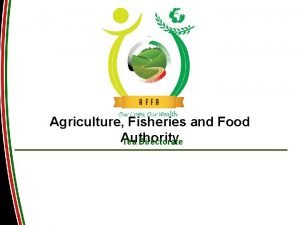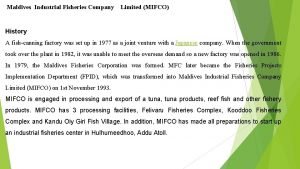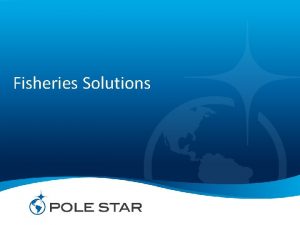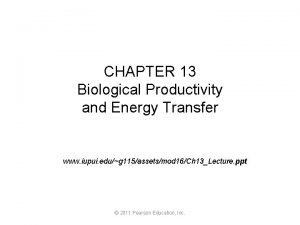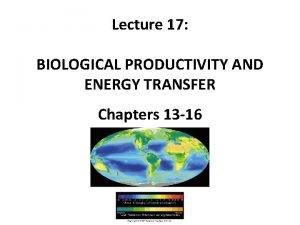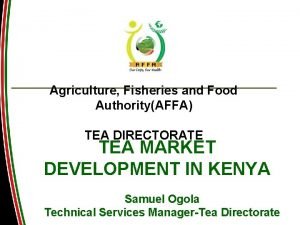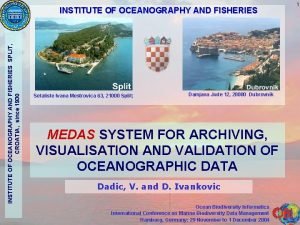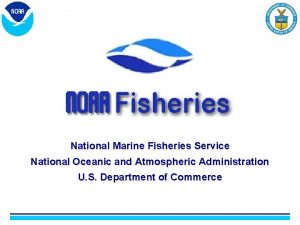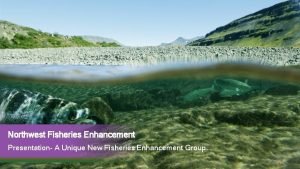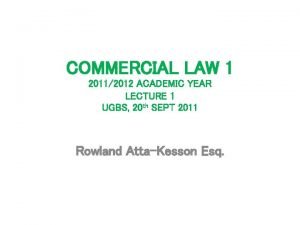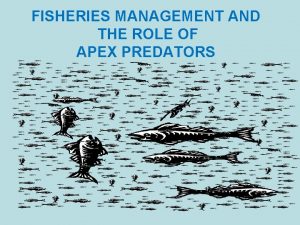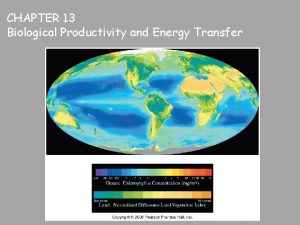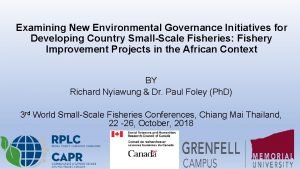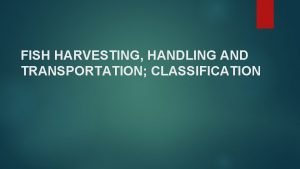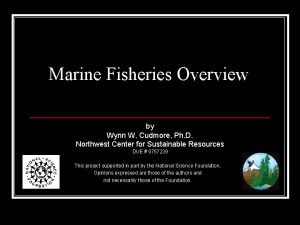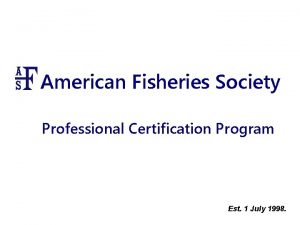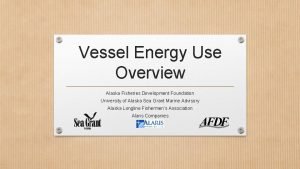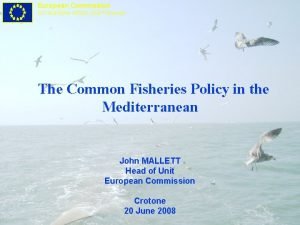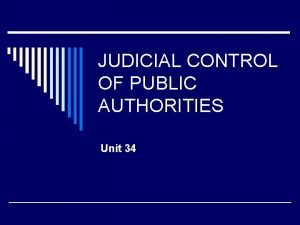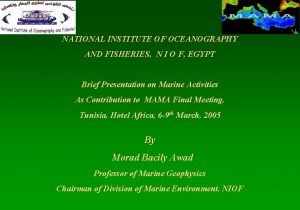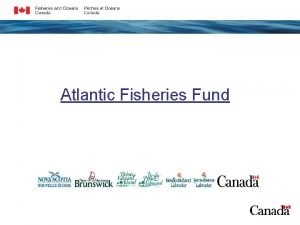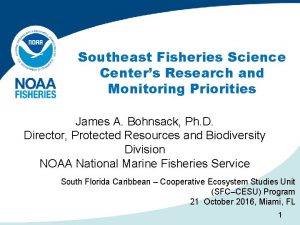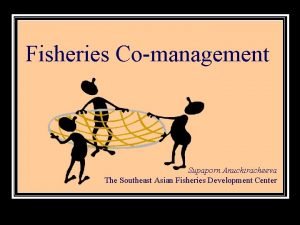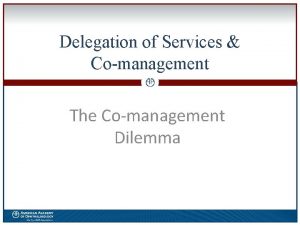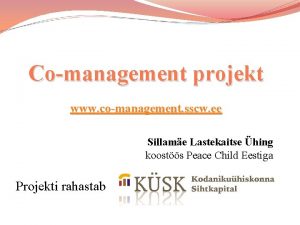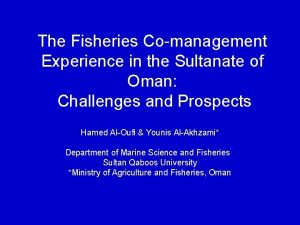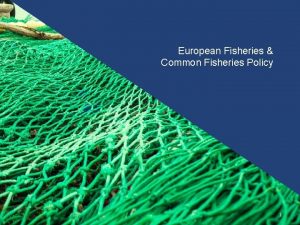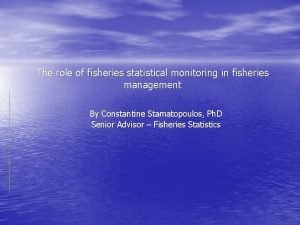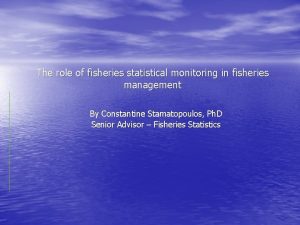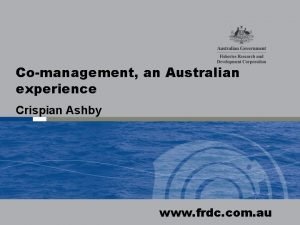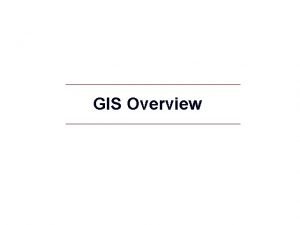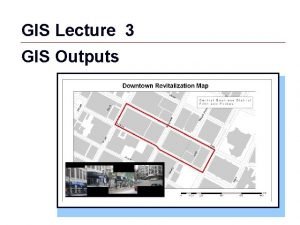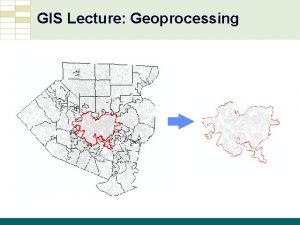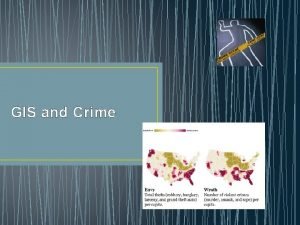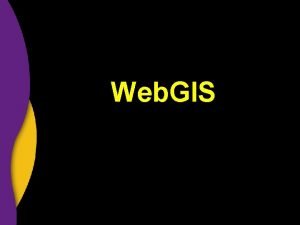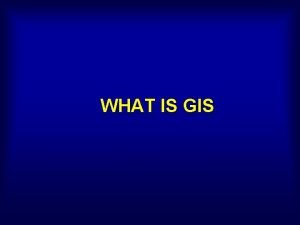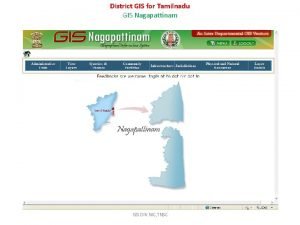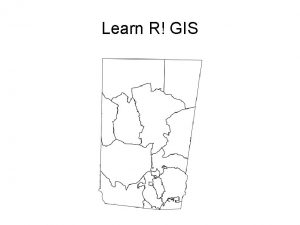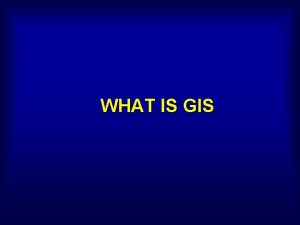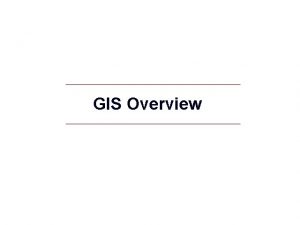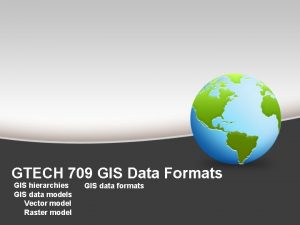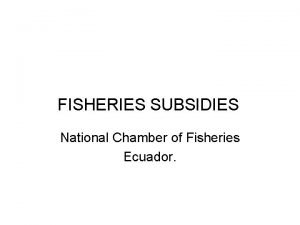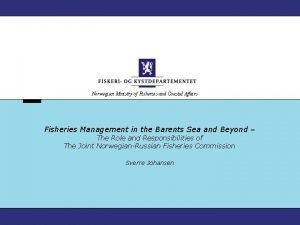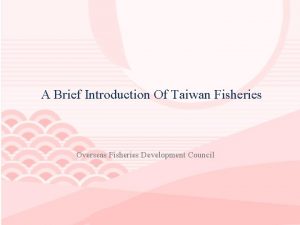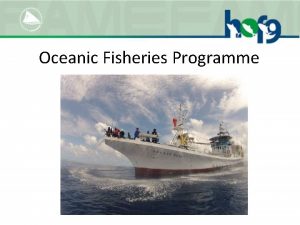The role of GIS on Fisheries comanagement experience

























- Slides: 25

The role of GIS on Fisheries co-management – experience from Lake Tanganyika, Tanzania By Peter Limbu Fisheries Technical Lead – Africa Program The Nature Conservancy SCGIS Conference in California -

Outline Background of the project Biodiversity Community initial Challenges Community work today…. What still challenges us and, …. . the role of GIS Future work

Tuungane Program – Heart of The Nature Conservancy in Lake Tanganyika – Tanzania Addressing: Population, Health and Environmental (PHE) issues in the Greater Mahale Ecosystem (GME) Swahili word for “Let’s Unite”

Where do we work in Lake Tanganyika

…. Where do we work in Lake Tanganyika

A walk through Lake Tanganyika Basic information Riparian Countries Burundi - 8%, DRC - 45, Tanzania 41%, Zambia – 6% Surface area 32, 600 km 2 650 km (longest lake in the world) Max. Depth: 1, 470 Km Average Depth: 570 Km LT Basin Area: 220, 000 sq. km Population: 12 Milion (2011) Birth rate >4. 8% Volume: 18, 900 cubic km. (Approx. 17 % of the world’s fresh water). Mean Width: 50 Km Age 12 – 20 million years old Diverse organisms > 1500 Endemism ≈ 70%

Why do we care? Why now? What do we know? What are challenges? Other livelihoods options?

…. Why do we care? Why now? What do we know? What are the challenges? Illegal fishing practices? 49% of the population under the age of 15 Average household size of 6. 7 29% higher than the 2010 Tanzania average of 5. 2 Active shift Fisheries to Agric. Lake sediment?

The Fisheries strategy - addressing the challenges Formation of BMUs, Creating alternative livelihoods, Identifying and protecting fish breeding sites, Support to identify sustainable fishing technology, Support sustainable Agric. to reduce lake sediment, Develop a Lake-wide Blueprint

Fisheries co-management… Enforcement units (Beach Management Units -BMUs) Formation of BMUs • 5 BMUs formed and certified by Government • 13 BMUs by 2016 • > 200 BMU Officials trained

Livelihood support… Micro-credit (Community Conservation Banks , BMU – COCOBA) Creating alternative livelihoods >10 COCOBAs established 20 drying nets (adding 15% to market price) >30 community drying nets

…Livelihood support Drying racks add 15% of the fish market price

Family planning with fisheries co-management Why Family planning? üPop increase? üHigh birth rate ü 49% of households - under 15 yrs üIncreased fishing pressure? üIncreased soil sediments in the lake?

Community work today….

What still challenge us and…. . the role of GIS ü ü ü What are the fish breeding sites Where are no-take zone located? What biodiversity/richness are on the sites Lake sedimentation

What/Where are the fish breeding sites

Where are the fish breeding sites Fish breeding sites by Government

Where are the no-take zones/sites? Kapalamsenga Buhingu Katumbi Sibwesa Lufubu

…Where are the no-take zones/sites? Kapalamasenga

…Where are the no-take zones/sites? Buhingu

…Where are the no-take zones/sites? Katumbi

Where are the no-take zones/sites? Kapalamsenga Buhingu Katumbi Sibwesa Lufubu

Where are the no-take zones/sites? Kapalamsenga Buhingu Katumbi Sibwesa Lufubu

Plan of future work: Identify and map: potential fish spawning/breeding/nursery sites critical habitats for endangered fish species soil sediment sites Development of Lake-wide blue print data base

Thank you for listening
 Experience expectant vs experience dependent
Experience expectant vs experience dependent Early experience vs. later experience
Early experience vs. later experience Example of indirect experience
Example of indirect experience Tea directorate
Tea directorate Mifco logo
Mifco logo Star fisheries
Star fisheries Pearson prentice hall
Pearson prentice hall Ocean fisheries
Ocean fisheries Tea directorate kenya
Tea directorate kenya Split institute of oceanography and fisheries
Split institute of oceanography and fisheries Nmfs org chart
Nmfs org chart Northwest fisheries
Northwest fisheries Hammond v ainooson
Hammond v ainooson Apex fisheries
Apex fisheries Ocean fisheries
Ocean fisheries Small-scale fisheries
Small-scale fisheries Ministry of food agriculture and fisheries denmark
Ministry of food agriculture and fisheries denmark Fish harvesting methods
Fish harvesting methods Fisheries management
Fisheries management Certified fisheries professional
Certified fisheries professional Alaska fisheries development foundation
Alaska fisheries development foundation Dg fisheries
Dg fisheries Rules of natural justice
Rules of natural justice Institute of oceanography and fisheries
Institute of oceanography and fisheries Factap
Factap Southeast fisheries science center
Southeast fisheries science center



